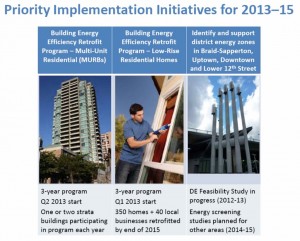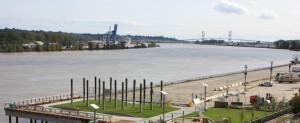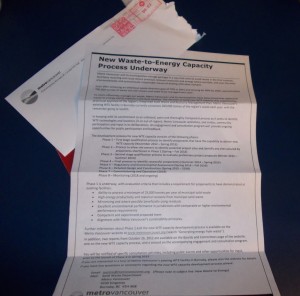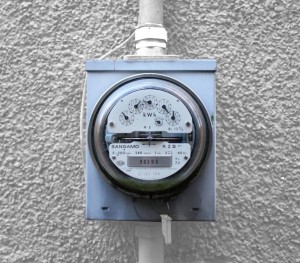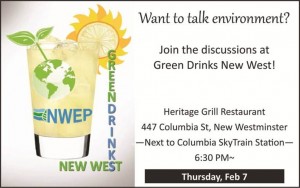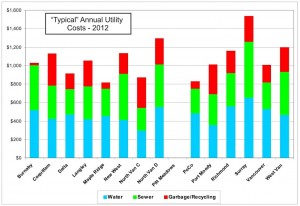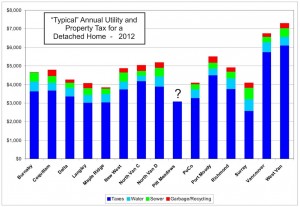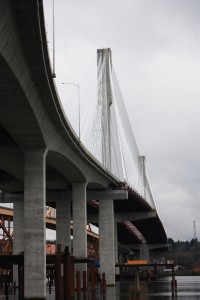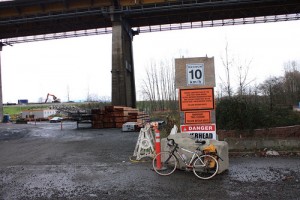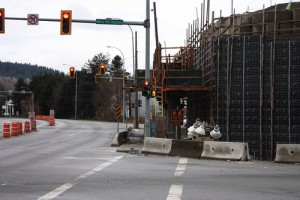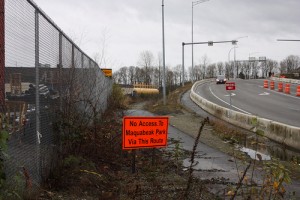I love it when I agree with the people I am disagreeing with.
Chris Bryan, the Editor of the New West News Leader, is building a reputation for some compelling opinion pieces. This week, he definitely hit that mark with his column entitled “New Westminster’s traffic discussion must dig deeper” . It is compelling because I can agree and disagree with almost every idea in the column.
The essential question (if Bryan will afford me the benefit of paraphrasing) is: “How long can New Westminster resist the paving over of our neighbourhoods to service the cities on our borders?”
My simple answer is as long as we are here. Because what is the alternative?
Yes, Surrey (pop 468,000) and Coquitlam (pop 126,000) would love it if New Westminster (pop 68,000) would get the hell out of the way and allow their residents to get from house to work or shops quicker. I would argue that is firmly in the category of “not our problem”.
Douglas Adams, in my second favorite piece of absurdist writing, The Hitchhiker’s Guide to the Galaxy discussed the idea of building freeways through people’s homes:
“Bypasses are devices that allow some people to dash from point A to point B very fast while other people dash from point B to point A very fast. People living at point C, being a point directly in between, are often given to wonder what’s so great about point A that so many people from point B are so keen to get there, and what’s so great about point B that so many people from point A are so keen to get there. They often wish that people would just once and for all work out where the hell they wanted to be.”
This was just as relevant to Arthur Dent’s house and his planet, which were (spoiler alert) both destroyed to make way for bypasses, as it was to Jane Jacobs in Washington Square Park (spoiler alert) which she helped save along with the soul of Greenwich Village and New Westminster in 2013.
I’m not sure why we, in New Westminster, the first City in British Columbia, the former Capital of the Colony, and the original heart of the region, should give a rat’s ass what upstart suburbs like Coquitlam and Surrey need, now that they have built huge communities of sprawling auto-oriented neighbourhoods whose very economic survival relies on their expanding populace having an unfettered ability to drive through the New Westminster community – through our very neighbourhoods.
It isn’t our intractable resistance to plowing over our City that got them into this mess, it is their continued choice to develop on the assumption that we would eventually plow our City down to accommodate their needs.
Yes, The Strange Case of the Bailey Bridge is a great example of how New Westminster concerns itself with preserving its character and historic neighbourhoods instead of sacrificing everything we are to allow Coquitlam to build (to quote Chris Bryan) “a rapidly growing big-box retail area, and… the redevelopment of Fraser Mills into a residential community housing thousands of new drivers poorly served by transit.”
Perhaps a better example is the history of Braid Skytrain Station. Coquitlam was given the opportunity, back in the 1990s to have SkyTrain service to Maillardville. Fears of the “CrimeTrain” and density caused Coquitlam to resist rapid transit in their most historic neighbourhood, and the line and station were moved to more forward-thinking (and more historic) New Westminster.
By their own preference, Coquitlam instead got 8 lanes of Highway 1, and 6 horribly congested lanes of Lougheed Highway in Maillardville. They are now afraid that 7,500 people living in Fraser Mills will be the gigantic strawpile that breaks the back of their community. It may dump too many cars across their shiny new overpass into the traffic quagmire of their own (terrible) planning. A 4-lane Bailey Bridge and overpass looming over Sapperton will surely afford them some temporary relief, but only by pushing the traffic pinch point, idling pissed-off drivers and livability impacts a few hundred metres into New Westminster neighbourhoods.
These bad planning decisions were not made by New Westminster- in fact we were not even consulted on them. Why should we suddenly acquiesce to their unanticipated “needs”?
So Coquitlam is willing to finance the slow destruction of our 150-year-old City? Thanks, but no thanks. Their generous offer only makes us enablers.
Instead, New Westminster is taking the principled, responsible stand. We are leading the region in building a compact, transit-friendly, sustainable community. We are developing a Master Transportation Plan that builds on our current strength as the Municipality with the second-highest alternative transportation mode share in the Province (excuse the emphasis, but this is a pretty big point!). We are making it easier for people to live, work and shop in the same community. We are building mixed commercial-residential developments on SkyTrain lines. We are increasing density, and are taking risks building office space and investing in community amenities.
For those who must move across the region, we are making it easier to do so through transit, through cycling, through car-sharing. We are making genuine efforts to reduce our community’s load on Coquitlam and Surrey roads. The results are demonstrated in our region-leading alternative mode share, and we are aiming to do better!
So do we need to “dig deeper”? Hell yes. We all do. We are facing major growth, climate, and economic challenges. In New Westminster, that means we need to have cojones to say to our neighbours that their car-driving problems are a result of their poor planning, and we are terribly sorry, but you are not going to fill our community with pavement to solve them.
If Coquitlam wants to put 7,500 residents in Fraser Mills, they had better figure out a way to move them around that doesn’t include cars passing through Braid and Brunette.
If Surrey needs a billion dollars to expand rapid transit to serve their growing population, we will be the first to step up and advocate to senior governments on their behalf to get them the transit system of their dreams. But if they want to spend that billion dollars to expand a freeway bridge into the heart of our City, they will have a hell of a fight on their hands.
We are ready, Chris. We are ready to help the region move forward and fulfill its Regional Growth Strategy, its Regional Transportation Plans, its Sustainability Plans.
It may look to them like we are “dug in”, but we in New Westminster are actually leading. Maybe it is they who need to dig deeper.
